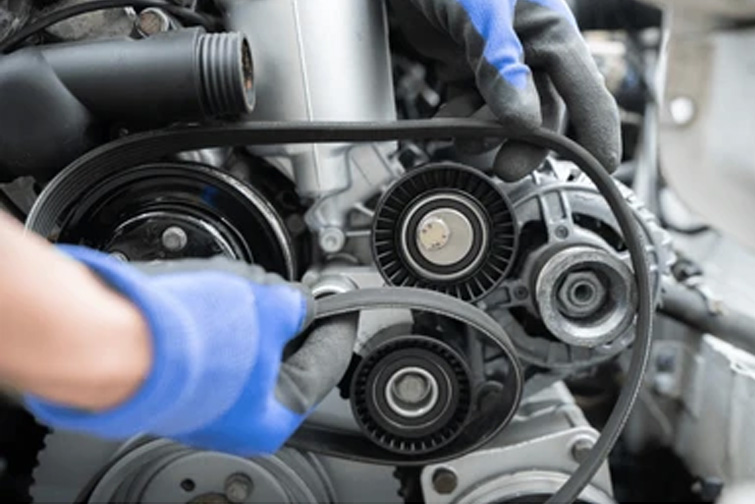1. V-belt pulleys, Fig. 9: made specifically to function with V-belts and offer effective power transfer. Moreover, they match with standard, small-engine, hexagon-style v-belts and include conventional dimensions, and one or more grooves. A pulley specifically made to be used with a V-belt—a belt with a trapezoidal cross-section—is known as a V-belt pulley. The V-belt pulley can grasp the belt and transfer power from a motor or engine to a machine or piece of equipment because it features a V-shaped groove on its outer circle that mimics the shape of the V-belt. In power transmission systems, V-belt pulleys are frequently utilized in applications requiring modest power, such as in car engines, industrial machinery, and agricultural equipment. A range of sizes and configurations are available for them, contingent on the intended use and the required transmission power. V-belt pulleys can have one or more grooves to support numerous belts and are usually made of cast iron or steel, which offers strength and longevity.

V-belt pulleys
One benefit of utilizing a V-belt pulley is that it makes belt installation and removal simple and rapid. No special tools or equipment is required; the belt may be effortlessly slid on and off the pulley. Additionally, by keeping the belt centered on the pulley, the V-shaped groove lowers the possibility of slippage or misalignment. V-belt pulleys are extensively utilized in a range of industries and applications because they are a dependable and effective means of transferring power from a motor or engine to a machine or piece of equipment.
2-Timing belt pulleys: made specifically to transfer power precisely when used in conjunction with timing belts. In synchronous drives, Timing Pulleys mate with timing belts that have the same pitch. The distance measured in pitch between the centers of two teeth is called the pitch. Pitch designations can be expressed in metric or inches. Special pulleys known as timing pulleys feature teeth or pockets all around the pulley body's exterior diameter. Timing pockets are attached to drive lugs on a belt's inner circle, and timing teeth are engaged to the holes in the metal belt. These teeth, or pockets, are not used to transmit power; they are just used for time.
3-idler pulleys: used to keep a belt tight or to change the direction of a belt. serve a crucial role in preserving the tension needed to drive the transmission and are frequently utilized as Belt Tensioners in v-belt drives. When there are obstacles that the drive must overcome or when the driven pulley's arc of contact with the v-belt is too small to effectively transfer torque, idler pulleys are necessary.
4-Flat belt pulleys: intended for use in light-duty power transmission applications with flat belts. In high-speed, low-power transmission systems, flat belt pulleys are usually powered by flat belts. Textiles, paper manufacturing, equipment for offices, and conveyors are examples of common applications.
There are many different kinds of belts and pulleys available; these are just a few examples. The application and power transmission needs will determine the particular belt and pulley type that is employed.


